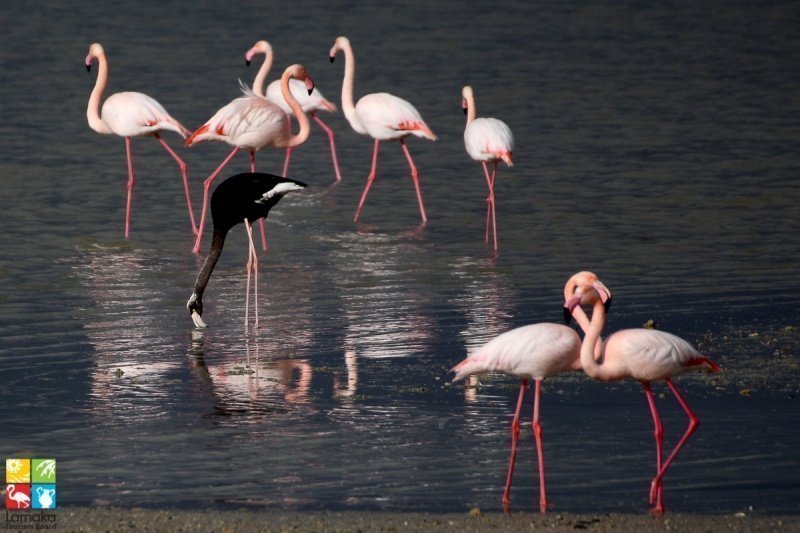Tourists are not the only visitors that ‘flock’ to Larnaka… a variety of feathered friends – both migrating and indigenous – also favour the region, making it a birdwatching (or birding) haven, and of particular significance on a conservation level for both the Mediterranean and Europe.
Over 350 indigenous and endemic species – along with the migrating species – can be seen on the island. Thanks to its unique location on the migratory route from Europe, Asia and Africa, Cyprus is a key breeding spot that sees around 250 million birds passing through the island each autumn and spring, including bright pink flamingos in their numbers and wild fowls that frequent Larnaka Salt Lake and Voroklini Lake.
Larnaka Salt Lake
Most famous for the flocks of thousands of vivid Greater Flamingos that frequent the lake during the winter season, Larnaka Salt Lake is actually a complex of four salt lakes, covering a surface area of 2,2 sq km.
Located near the old airport and the Hala Sultan Tekke mosque, the lake has huge ecological value and is considered to be one of the most important wetlands of Cyprus. As such, it has been declared a Ramsar Wetlands of International Importance site, and an EU Natura 2000 site.
The dark red algae which grows in the Salt Lake is the basis of the food chain, as the small shrimp in the lake feed on it. In turn, this shrimp is food not only for the flamingos, but also other migratory birds, which total more than 80 species. The inflow of fresh water in the Salt Lake is necessary as it maintains the ecological balance of the wetland. All aquatic birds that visit the Salt Lake reproduce in the area.
Oroklini Lake
Voroklini Lake (in the village of Voroklini off Dekeleia Road) is one of only seven natural wetlands in Cyprus, and very important on both a Cyprus and pan-European level. As such it is a Special Protection Area (SPA) under the EU Birds Directive, and a Site of Community Importance (SCI) under the EU Habitats Directive. A total of 190 bird species have been recorded at the site, but it is especially important for two bird species; the Black-winged Stilt Himantopus himantopus (which favours the lake as its nesting site above any other area on the island), and the Spur-winged Plover Vanellus spinosus that nest there. Other migratory birds include herons, flamingos and glossy ibis, as well as the pelican, which is a rare sight at the lake for only a handful of days on its way to Africa.
The bird watch found by the lake is one of the projects implemented in a three-year EU-funded LIFE conservation project ‘Restoration and Management of Oroklini Lake’. The project was aimed at protecting this significant wetland and raising awareness of its value for biodiversity. Aside from the bird watch, there is also an information kiosk where you can find out all about the lake’s birds – many of which nest there.
Cape Kiti
The cliffs around Cape Kiti are often home to many migrant bird species, such as quail, wryneck and calandra lark.
Courtesy of the CTO






